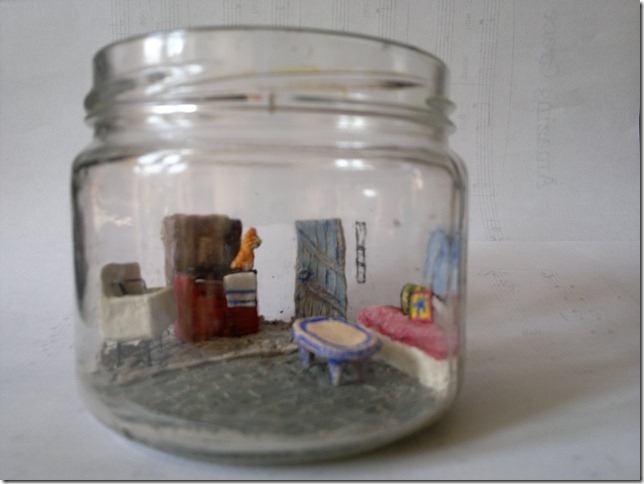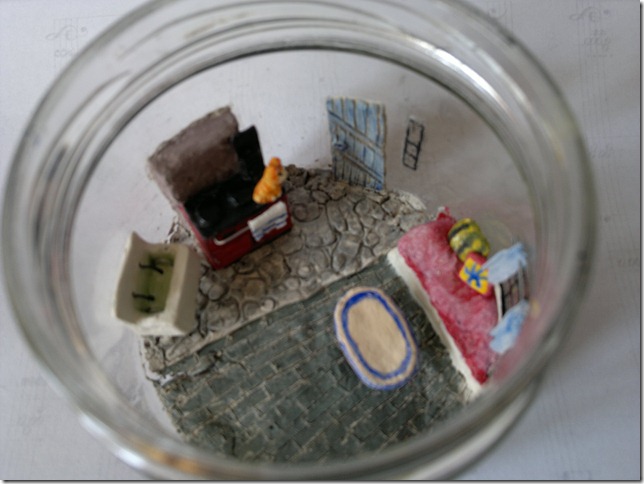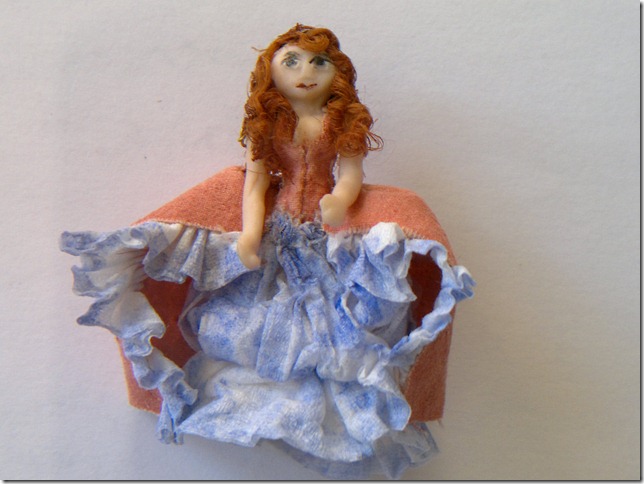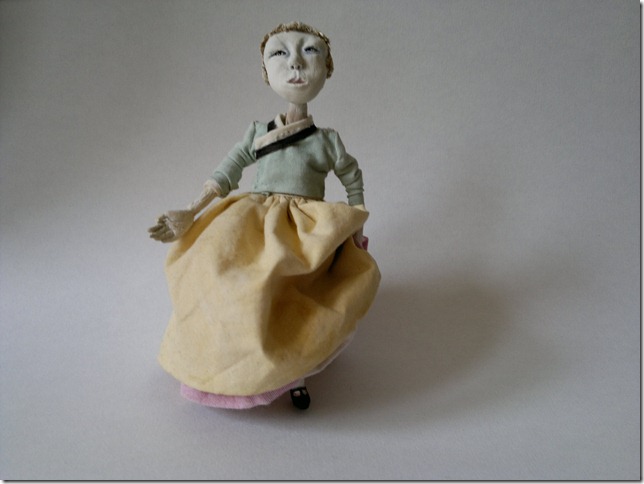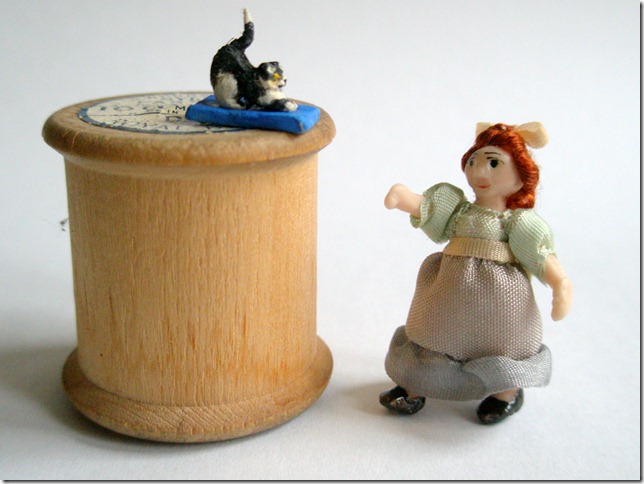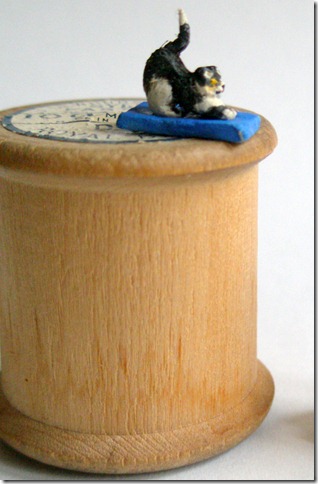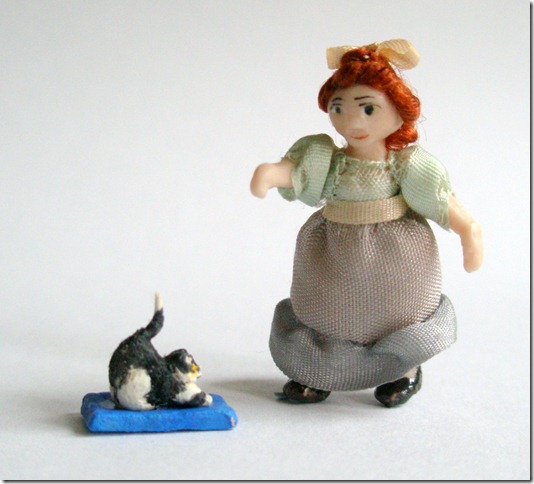The cast list of Miniatura exhibitors is ever-changing, though always of the same quality. This spring Radical Miniatures will be taking a rest but that doesn’t mean that Sahaya has stopped miniaturising.
She has been working in 48th scale and has used some of the porcelain miniatures I had at the last show to make a scene in a jar.
You can take a peek inside from the top too, you can see
Sahaya has been making her own furniture and dressing dolls.
This is one of mine that Sahaya has dressed. If you compare it to one of her own
….in a much larger scale, you can see that, even though it’s my doll dressed, it still looks like a doll by Sahaya. This is considered one of the marks of an artist working in any discipline or scale, that their work is readily identifiable and always their own. If you think of the work of great painters of the past, experts can identify unknown works of famous masters by the style, the materials and the brush strokes.
Those who are not artists might wonder why this should be so – is it cleverness, happenstance or a desire to be different? Having ‘done art’ myself for a couple of decades and interviewed artists in every medium, I have reached the conclusion that the pragmatic answer is the right one. Consider, for example, Toulouse Lautrec. How much of Henri’s output is influenced by his stature? The answer of course is ‘all of it’. His point of view is necessarily from below, looking up, put his paintings into a search engine and see for yourself just how many legs and feet and hemlines he depicted. All artists are bounded by their physical situation, whether seeking to overcome it or embracing its limitations. For myself, my contact lens prescription will never be able to be strong enough to correct my massive myopia; I’m always going to be an impressionist painter. Very small dolls, however, I can see an inch from my nose perfectly.
There is also the consideration of the physical learning necessary for all real art. I do not consider modern assemblages of found materials to be art in this sense. When I talk of art I use the word in the sense that most miniaturists would: to mean the mastery of a medium by practise and repetition coupled with skill and aptitude that permit the artist to use the medium to say something meaningful about the world. Using this definition it is apparent that the repetition will in itself cause pathways in the brain that mean, for example, to create this brushstroke the artist will always hold the brush here move his hand in this way, remove it from the paper here and so on. In a class of twenty artists all learning how to make this brush stroke each will have to accommodate the length of his own fingers, the muscular strength of his grasp and so on. As with all learning, successful moves are self-reinforcing and so it becomes evident that artists whose work sells must develop their own style in order to become successful. The practice is the art; the more practised it is the more artful it becomes.
For some of us with less inherent artistry (such as me) practise makes nearly perfect. For some with a natural aptitude (such as Sahaya) early efforts are already very good and looking just like her output from the outset. Consider her cat
there it is up on the cotton reel
chock full of cattitude. It’s well scaled, certainly my doll seems ready to make friends with it.
We may hope that Sahaya will return in the autumn with more 48th scale animals, there is definitely a shortage of them.
Meanwhile have a look at some art and ask yourself some questions: which artists with spectacles are long sighted or short sighted? Which sculptors are muscular and long armed? Which metal silversmiths have fine motor skills in the fingers and which metal workers had bronzes cast from clay models made with rather immobile thumbs?
Art is life and life is art unless it’s done by con-artists, in which case it’s just business.
~~~~~~~~~~~~~~~~~~~~~~~~~~~~~~~~~~~~~~~~~~~~~~~~~~~
JaneLaverick.com – a little arty party

